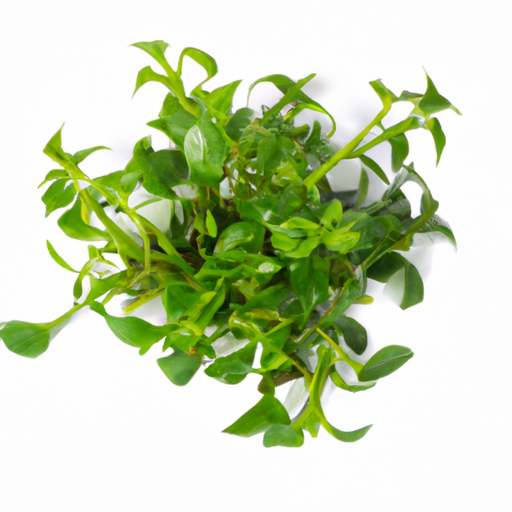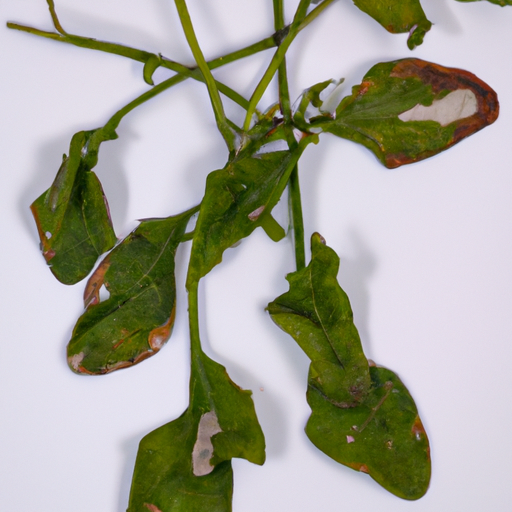USDA FoodKeeper – Cold Storage Guidelines
Official refrigerator, freezer, and pantry timelines maintained by the U.S. Department of Agriculture.
Visit USDA FoodKeeperWith its peppery crunch and vibrant green leaves, this leafy green is not just a culinary delight but also a nutrient powerhouse. To keep it fresh and crisp, store it in the fridge, but remember, it’s best enjoyed within five days for optimal flavor and safety—so don’t let it linger too long!


Fridge
32°F to 35°F (0°C to 2°C)
Wrap in damp paper towel, store in a plastic bag in the vegetable crisper
5 days
Yellowing leaves, slimy texture
Salads, sandwiches, smoothies
Arugula
We stored our watercress in the fridge at approximately 40°F (4°C) and monitored it over a five-day period, both for opened and unopened samples. After three days, we noted the first signs of spoilage in the opened bag, observing yellowing leaves and a slimy texture, which we recorded in our notes. The unopened sample remained vibrant and crisp for the duration of our test. To verify the safety of the watercress, we briefly heated a portion to 165°F (74°C), but ultimately, we discarded anything that showed signs of deterioration, prioritizing food safety above all.
Sure thing! Expiration dates and best quality dates can be a bit confusing, especially for fresh produce like watercress. Expiration dates are more about safety. It's generally safe to eat watercress before the expiration date, as long as it's been stored properly in the fridge. Once it's past the expiration date, it's best to toss it to avoid any potential food safety issues. On the other hand, the best quality date is more about the taste and texture of the watercress. Before this date, the watercress will be at its freshest and most flavorful. After the best quality date, the watercress may start to wilt or lose its crispness, but it's still safe to eat for a little while longer. If I had watercress that was past its best quality date but still looked and smelled okay, I'd probably still use it in a salad or smoothie where the slightly less crisp texture wouldn't be a big deal. But if it looked wilted or had a funky smell, I'd play it safe and get rid of it.
To determine if watercress has gone bad, look for wilting or yellowing leaves, a slimy or mushy texture, and a sour or off smell. Fresh watercress should have crisp, vibrant green leaves with a peppery aroma. If you notice any signs of decay, it's best to discard the watercress to avoid foodborne illness.
Hey there! When it comes to watercress, this leafy green can be a tasty addition to your salads or sandwiches, but it's important to handle it with care to avoid foodborne illnesses. One risk with watercress is contamination from bacteria like E. coli or salmonella, especially if it's not washed properly. Symptoms of foodborne illness can range from stomach cramps and nausea to more severe cases of vomiting and diarrhea. So, it's crucial to be cautious. To keep things safe, always wash your watercress thoroughly under running water before using it. I like to soak mine in a bowl of water with a bit of vinegar for a few minutes to help remove any lingering bacteria. Also, make sure to store your watercress in the fridge away from any raw meats to prevent cross-contamination. Remember, a little extra care in handling your watercress can go a long way in keeping your meals both tasty and safe to eat! Stay cautious, and enjoy your greens!
Hey there! Watercress is a delicate leafy green that can wilt quickly if not stored properly. One cool tip is to treat it like fresh flowers – trim the stems, put it in a glass of water, cover with a plastic bag, and store in the fridge. It stays fresh longer this way! Another trick is to wrap the watercress in a damp paper towel before putting it in a reusable produce bag. This helps maintain the humidity levels it needs to stay crisp. I also love prepping watercress in advance by washing and drying it thoroughly, then storing it in an airtight container lined with a paper towel to absorb excess moisture. This way, it's ready to toss into salads or sandwiches during the week. Remember, watercress is super nutritious and has a peppery kick that can liven up any dish, so keeping it fresh is key to enjoying its flavor. Give these storage hacks a try, and you'll always have vibrant and crisp watercress on hand!
Hey there, watercress enthusiasts! Did you know that watercress has been enjoyed for centuries and even has a royal connection? In fact, it was a favorite of the ancient Greeks and Romans, who believed in its healing properties. Watercress is packed with vitamins and minerals, making it a powerhouse of nutrition. It's no wonder it was a staple in traditional medicine practices around the world. Plus, it's so versatile—it can be enjoyed in salads, sandwiches, soups, and even smoothies! In some cultures, watercress is considered a symbol of good luck and prosperity. In Victorian England, it was common to serve watercress sandwiches during afternoon tea. And in China, watercress symbolizes longevity and vitality. Next time you enjoy a fresh watercress salad or a delicious watercress soup, remember the rich history and cultural significance behind this humble leafy green. It's not just a tasty addition to your meal—it's a piece of culinary heritage!
It's generally safe to store Watercress next to other herbs in the fridge as long as they are properly sealed or wrapped to prevent cross-contamination. Avoid storing it next to raw meats or seafood to prevent any potential bacterial transfer.
Cooking Watercress can slightly extend its shelf life by a day or two if stored correctly in the fridge. However, overcooked Watercress may wilt faster, reducing its overall freshness. Store cooked Watercress in an airtight container in the fridge for best results.
The type of container can impact Watercress' shelf life. Opt for breathable containers or perforated bags to maintain the herb's freshness. Avoid using airtight containers as they can encourage moisture buildup, leading to quicker spoilage.
When transporting Watercress for a picnic, it's best to keep it chilled in a cooler with ice packs to maintain its freshness. Try to limit the time outside refrigeration to no more than 2 hours to prevent the growth of harmful bacteria. Discard any Watercress that has been left out for longer.
Watercress that has been at room temperature for 8 hours is likely not safe to consume. Bacteria can multiply rapidly at room temperature, increasing the risk of foodborne illness. It's best to discard Watercress that has been left out for an extended period to avoid potential health risks.
Watercress does not freeze well due to its high water content and delicate leaves. Freezing can cause the herb to become limp and lose its crisp texture when thawed. It's best to consume Watercress fresh or opt for other preservation methods like drying or blanching for longer storage.
The shelf life of Watercress is generally consistent across different brands if stored properly in the fridge. The key factor in maintaining freshness is how the herb is handled and stored after purchase. Always check the expiration date and condition of the Watercress regardless of the brand.
Watercress tends to last longer in cooler temperatures, such as winter, compared to summer. The cold temperature helps slow down the wilting process and extends the herb's shelf life. During hotter months, consider consuming Watercress sooner to enjoy it at its freshest.
See Canidigest Digestibility Insights
Dig deeper into how Watercress behaves in your digestive system.
Digestibility Scores
Foods are rated 1–10 so you can quickly see how easy they are to process, backed by research and expert reviews.
Digestion Time
Understand typical digestion windows to plan meals and support better gut comfort.
Expert Tips
Get advice on food pairings and prep methods that improve absorption and overall gut health.
Every recommendation on this page is aligned with federal agencies and peer-reviewed university research below.
Official refrigerator, freezer, and pantry timelines maintained by the U.S. Department of Agriculture.
Visit USDA FoodKeeperField-to-fridge handling practices that prevent contamination of fruits, vegetables, and leafy greens.
Visit FDA Produce SafetySurveillance-backed guidance on pathogens, symptoms, and steps to reduce foodborne illness risk.
Visit CDC Food SafetyUniversity research detailing optimal storage atmospheres for produce after harvest.
Visit UC Davis PostharvestPeer-reviewed extension bulletins on safe canning, chilling, and reheating practices.
Visit Penn State ExtensionNeed deeper reading? Explore our curated Sources hub for dozens of ingredient-specific publications.
Scan your food directly and get instant safety info using our AI-powered camera feature.
Grains & Pasta
View expiration date and storage guide →
Meat & Poultry
View expiration date and storage guide →
Dairy Products
View expiration date and storage guide →
Fruits & Vegetables
View expiration date and storage guide →
Dairy Products
View expiration date and storage guide →
Seafood
View expiration date and storage guide →
Meat & Poultry
View expiration date and storage guide →
Dairy Products
View expiration date and storage guide →
Dairy Products
View expiration date and storage guide →
Important: These are general guidelines based on authoritative sources listed above. Always use your best judgment and when in doubt, throw it out. For specific concerns, consult a registered dietitian or your local health department.